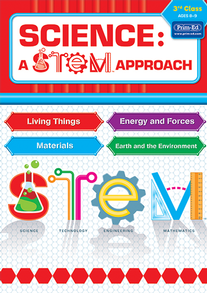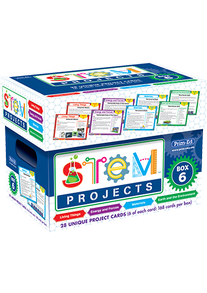-
0
Your cart is currently empty.
-
0
Your cart is currently empty.
-
SESE Resources, Worksheets & Books
Social, Environmental and Scientific Education (SESE) is a crucial part of the Irish primary school curriculum, aimed at providing pupils with a comprehensive understanding of the world, its people, the environment and how they interact.
Prim-Ed Publishing offers a range of resources to support the teaching of SESE in primary schools. Whether it’s lesson plans, activity sheets, worksheets or interactive activities, Prim-Ed Publishing has everything you need to help pupils excel in their SESE studies.
What is SESE?
SESE stands for Social, Environmental and Scientific Education. SESE consists of three subjects: science, geography and history. These subjects are designed to give pupils a solid foundation in the natural and social sciences and an appreciation for the complexity of the world around them.
Aims of teaching the SESE curriculum
The primary goals of the SESE curriculum are to:
- promote critical thinking, problem-solving and decision-making skills;
- encourage empathy and respect for different cultures and perspectives;
- provide pupils with the knowledge and skills necessary for active citizenship;
- foster an appreciation and understanding of science, geography and history;
- support the development of language and communication skills;
- provide opportunities for pupils to engage in hands-on and experiential learning;
- encourage pupils to think independently and ask questions; and
- prepare pupils for further study and future careers in science, environmental and social fields.
What do pupils learn in the SESE curriculum?
In the social, environmental and scientific education curriculum, pupils learn about the following:
- Primary history curriculum — the study of events, people and cultures from the past and their impact on the present.
- Primary geography curriculum — the study of physical and human geography, including the world’s continents, oceans, weather and climates.
- Primary science curriculum — the study of the natural world, including biology, chemistry, physics and earth science.
History
The history curriculum in primary school is designed to support the development of children's understanding and appreciation of history.
Through knowledge and understanding of people, events, historical stories, social life and cultural values from the past, they are able to come to a better appreciation of their local and wider environments. Furthermore, history is not just about facts but learning how to think critically to gain an in-depth understanding and reflect upon their current experiences.
Therefore, history has a lead role in the primary school curriculum as it helps children form invaluable skills for their futures including local social awareness and the critical ability to interpret history free from bias.
With this type of educational history experience, pupils develop basic skills as a historian which leads to further critical thinking ability.
Geography
The geography curriculum for primary school children in Ireland is designed to help them understand and appreciate the world around them. The curriculum supports children by developing knowledge and understanding of the physical, human and environmental aspects of geography.
From natural environments such as coastlines to human, local and wider environments like cities and towns, pupils are encouraged to discover the geographical features that make up their own county, country and the wider world.
The curriculum enables children to explore natural environments and human interactions with regions and learn geographical skills – such as using maps, data interpretation and critical thinking – and supports children to develop a better understanding of our natural and human elements.
Science
The science primary school curriculum in Ireland is designed to equip children with basic scientific skills essential for future studies. It reinforces this learning through knowledge and understanding of science, covering topics such as living things, energy and forces, materials, and environmental awareness, giving pupils the tools they need to understand basic science concepts and use them in everyday life.
Scientific education is designed to be inclusive and to accommodate different learning styles and abilities. Teachers are encouraged to use a variety of teaching methods, including computer simulations, and hands-on science activities, to engage children in the learning process. Learning through activities such as scientific experiments and outdoor exploration is encouraged, allowing pupils to gain hands-on experience in their scientific studies.
Overall, the primary school science curriculum supports children to develop basic skills in scientific literacy and fosters an appreciation of the natural world. It provides a solid foundation for further scientific education and related subjects at secondary school and beyond.
Resources in the Prim-Ed Publishing SESE range
Included in the Prim-Ed Publishing SESE range, which is an extensive collection of educational resources designed to support primary school pupils in their learning journey, are the following:
- detailed and informative worksheets covering primary science, geography and history topics;
- engaging and interactive workbooks that provide pupils with opportunities to practise and apply the concepts they have learned;
- comprehensive teacher guides that provide detailed lesson plans, activities and assessments;
- digital resources and audio-visual materials, such as DVDs, that provide pupils with a multimedia learning experience;
- interactive whiteboard resources that engage pupils and support collaborative learning; and
- assessment materials, including tests and quizzes, that help teachers evaluate pupil progress.
The Prim-Ed Publishing SESE range of resources is suitable for pupils of all abilities, and the teacher’s notes provide guidance on differentiating the material to meet the needs of individual pupils.
Explore our range of SESE curriculum resources
If you are a teacher looking for high-quality SESE resources to enhance your pupils’ learning experience or a parent looking for resources to support your child’s education at home, take a look at the SESE range from Prim-Ed Publishing.
With a wide range of resources available for children from Junior Infants to Sixth Class, you are sure to find something that meets your needs. You can also check out our blogs for additional educational resources, articles and tips on how to make the most of our materials.
Contact us or browse our new releases for engaging and effective resources that will give your pupils the best possible SESE education.
Frequently asked questions
What is SESE?
SESE stands for Social, Environmental and Scientific Education. It is a type of integrated curriculum that combines three important fields of study – history, geography and science – in order to provide pupils with a well-rounded education.
Are there any resources available to help with teaching SESE?
Yes! There are a number of great resources available to help with teaching SESE. Prim-Ed Publishing has an extensive range of worksheets, pupil workbooks, eBooks, lesson plans, teacher guides, and many more resources designed for the Irish curriculum. These engaging materials can target specific areas of SESE or they can be used to support the teaching in your classroom.
What is the importance of SESE in primary school?
Social, Environmental and Scientific Education (SESE) is an essential part of the learning process in primary school. It helps provide pupils with a holistic understanding of the world around them. Through SESE activities, children learn important skills such as problem-solving, critical thinking, collaboration and communication.
What are the different topics covered under SESE?
SESE involves teaching topics from the following three subjects: history, geography and science.
How is SESE taught in primary schools?
SESE (Social, Environmental and Scientific Education) is an important part of the primary school curriculum in Ireland. The subject is taught to children from Junior Infants to Sixth Class.
At the primary school level, SESE is typically taught through hands-on activities such as field trips, experiments, simulations and discussions that engage both teachers and pupils in active learning. The following teaching methods are often used:
- traditional classroom activities, including lectures, discussions and presentations;
- hands-on activities such as field trips and experiments; and
- interactive exercises such as role-play or case studies.



















